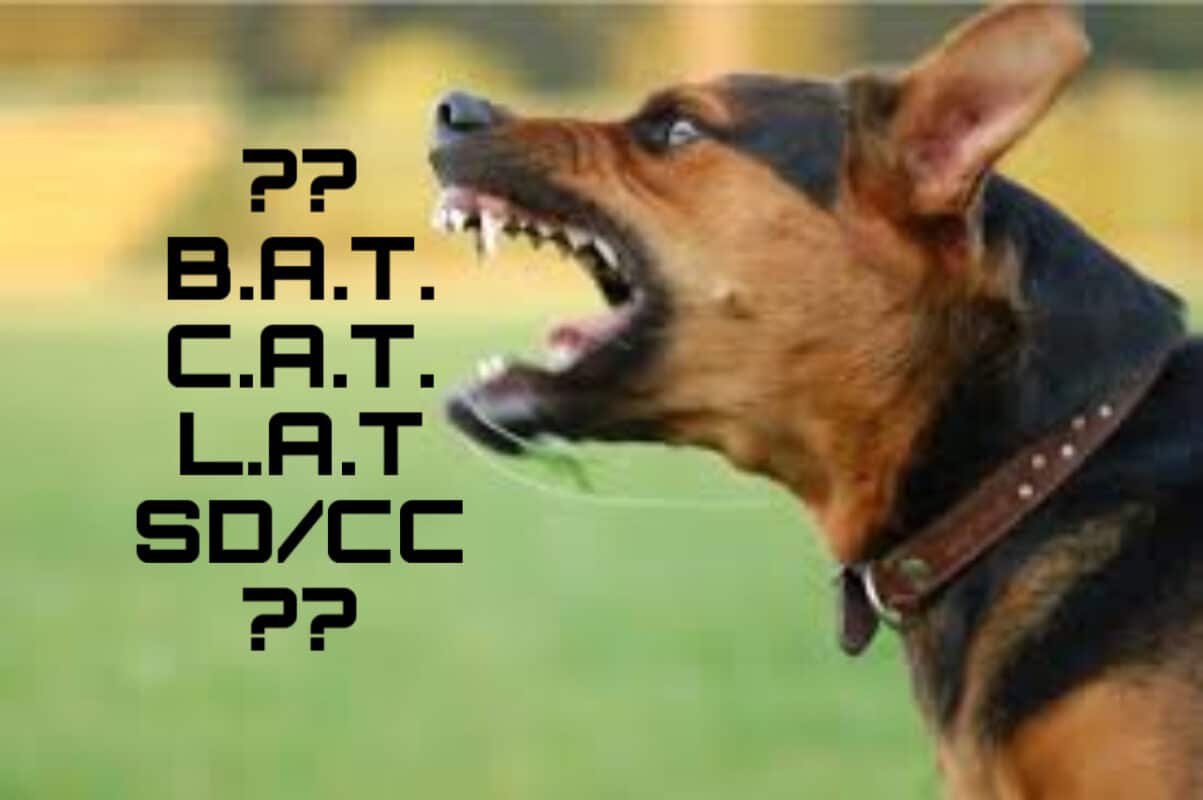behavior modification, Canine Psychology, DogTraining, Ethical Dog Training
Classical Counter-Conditioning Treating Canine Aggression and Reactivity
In Defense of Classics: Why Classical Counter-Conditioning Reigns Supreme in Treating Canine Aggression and Reactivity
By Will Bangura, M.S., CDBC, CBCC-KA, CPDT-KA, FFCP (Dog Behaviorist), Certified Dog Behavior Consultant
In the nuanced world of canine behavioral therapy, there is no shortage of methods aimed at treating aggression and reactivity. While new approaches like Behavior Adjustment Training (BAT), Look at That (LAT) Training, and Constructional Aggression Treatment (CAT) are touted as groundbreaking, it’s time to take a step back and evaluate their actual efficacy. In this comprehensive breakdown, we’ll critically assess these newer techniques while making a strong argument for the enduring effectiveness of Classical Counter-Conditioning (CC) and Systematic Desensitization (SD).
The New Players: An Overview
BAT (Behavior Adjustment Training)
Reality Versus Hype
Grisha Stewart introduced BAT with much fanfare, heralding it as a multi-faceted approach that employs both positive and negative reinforcement (Stewart, 2011).
What Falls Short:
- High Skill Threshold: BAT requires impeccable timing and a nuanced understanding of canine behavior, which is often unrealistic for the average pet parent or even professionals.
- The Controversy of Negative Reinforcement: While claiming to offer rapid results, the inclusion of negative reinforcement can increase stress and escalate the very aggressive behaviors one is attempting to modify.
LAT (Look at That) Training
Reality Versus Hype
LAT, developed by Leslie McDevitt, promises simplicity but often just scratches the surface (McDevitt, 2007).
What Falls Short:
- Symptomatic Treatment: LAT is excellent at momentary distraction, but fails to address the root emotional causes of aggression or reactivity.
- Short-lived Effects: Quick fixes are appealing but frequently ineffective for long-term behavioral change.
CAT (Constructional Aggression Treatment)
Reality Versus Hype
CAT takes a bold approach with its significant reliance on negative reinforcement (Rosales-Ruiz & Snider, 2008).
What Falls Short:
- Ethical Questions: Heavy use of negative reinforcement risks damaging the trust-based relationship between the pet guardian and the dog.
- High Risk of Backfire: Incorrect execution can exacerbate aggression, making it a risky choice for the untrained hand.
The Undeniable Efficacy of CC and SD
Classical Counter-Conditioning (CC) and Systematic Desensitization (SD) are rooted in decades of empirical research and practical application. Their focus on altering the dog’s underlying emotional state makes them profoundly effective and universally applicable.
Why New Trainers Sometimes Seek Alternatives: A Tale of Poor Execution
New trainers often venture into alternative methods like BAT, LAT, and CAT, not because these methods are inherently superior, but due to a fundamental misunderstanding or poor execution of CC and SD. The dilemma often lies in misunderstanding the gradual steps involved in SD or the intricacies of stimulus pairing in CC. This leads to partial or failed interventions, causing frustration and a hasty search for ‘newer and better’ approaches. Essentially, it’s not the fault of these tried-and-true methods but rather the pitfalls of inadequate execution and lack of expertise.
Marketing Hype and Financial Incentives: The Business of ‘Newness’
Another factor that often goes unnoticed is the marketing angle. The allure of something ‘new and improved’ is a strong selling point, especially in an industry where pet parents are desperate for solutions. Techniques like BAT, LAT, and CAT, are often pitched as revolutionary when they are more like derivatives or subsets of the principles already encapsulated in CC and SD. Trainers may lean into these new terminologies and techniques as a unique selling proposition, drawing in clientele searching for quick fixes, while also capitalizing on new trainers looking for a niche or specialization. In some cases, new trainers are paying thousands of dollars to be certified in a technique that is a derivative of SD/CC, and some are encouraged to pay a monthly subscription indefinitely to be included in the “latest and greatest” derivative of what has been around forever and works the best, SD/CC. Profiting off of naive or new trainers seems to be more and more the trend. Sell the snake oil, then rebrand it as version 2.0, then rebrand again into version 3.0, 4.0, 5.0, you get the idea. The marketing of these methods is sometimes less about true innovation and more about creating a brand that stands apart. This can be misleading for both pet guardians and professionals who are genuinely seeking the most effective solution for behavioral issues.
Conclusion and Recommendations
Classical Counter-Conditioning and Systematic Desensitization remain the cornerstone methodologies for treating canine aggression and reactivity. Their longevity and effectiveness are supported by a wealth of scientific research and empirical evidence. While it may be tempting to explore newer methods, it’s crucial to understand that the alleged shortcomings of CC and SD often stem from poor execution and understanding, rather than any deficits in the methodologies themselves.
References
- Stewart, G. (2011). Behavior Adjustment Training: BAT for Fear, Frustration, and Aggression in Dogs. Dogwise Publishing.
- McDevitt, L. (2007). Control Unleashed: Creating a Focused and Confident Dog. Clean Run Productions.
- Rosales-Ruiz, J., & Snider, K. S. (2008). Constructional Aggression Treatment: A Comprehensive Program. Sunshine Books.
For those truly committed to understanding and resolving aggression and reactivity in dogs, my recommendation is to invest time in mastering CC and SD. These proven methodologies not only address behavioral issues effectively but also strengthen the emotional bond between the pet guardian and the dog, providing long-lasting and meaningful results.
If you’re in the field, whether a seasoned professional or a newcomer, stay cautious of the marketing hype around newer techniques. What’s at stake is not just financial investment but the well-being and emotional health of our canine companions. Stick with what has been proven to work, and work well.


